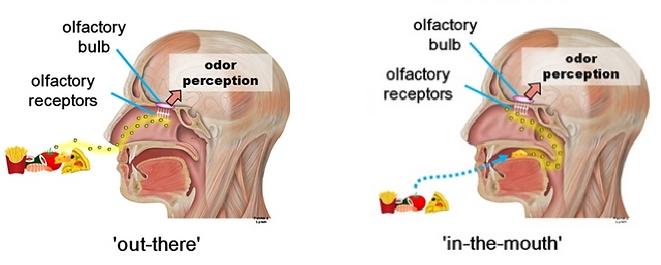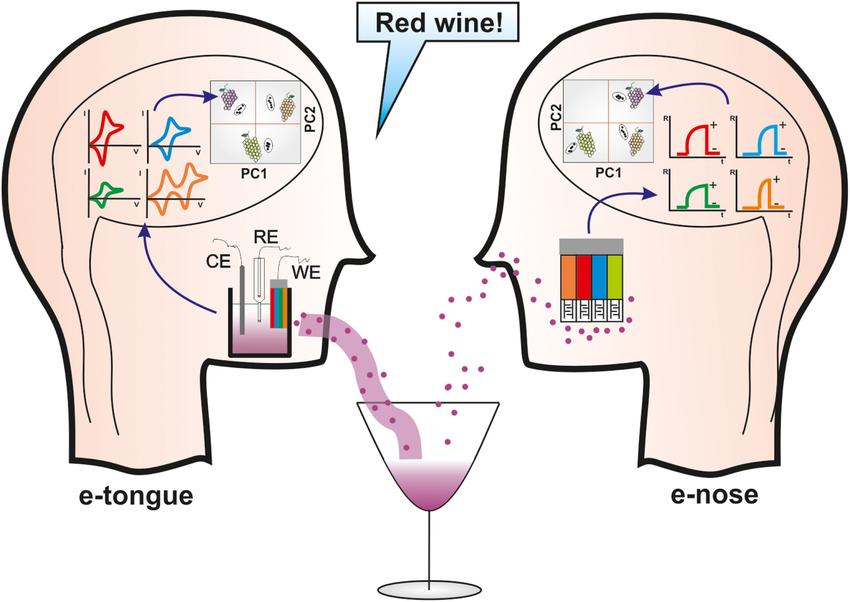Flavoring Agent and Sweetener Screening of Oral Thin Film
Inquiry
In the formulation study of oral thin film, the influence of the type and dosage of taste correction agents on taste has become an important index for pharmaceutical enterprises. In particular, for children's oral thin film, children are different from adults in terms of tolerance of adverse feelings, and the risk of adverse drug use behavior caused by poor taste is correspondingly increased. Therefore, compared with adult drugs, taste evaluation of children's drugs has stronger clinical significance and value, and has gradually become an important content of comprehensive clinical value evaluation of such drugs. CD Formulation pays special attention to the evaluation of taste during the development of oral thin film and provides professional flavoring agent and sweetener screening services.
 Fig.1 Orthonasal and Retronasal Odorant Identification Based upon Vapor Phase Input from Common Substances Joshua Pierce. (Bruce P. Halpern, et al., 1996)
Fig.1 Orthonasal and Retronasal Odorant Identification Based upon Vapor Phase Input from Common Substances Joshua Pierce. (Bruce P. Halpern, et al., 1996)
Why Use Flavoring Agent and Sweetener in Oral Thin Film?
- Sweeteners are used to mask the unpleasant smell and bitter taste of the active ingredients of the drug.
- Flavoring agents can cover up the unpleasant or bitter taste of an included medicine.
- Improve patient compliance and acceptance of the medication.
Our Flavoring Agent and Sweetener Screening Services
Taste Evaluation
Sweeteners are now a crucial component of both food and medicinal items that are meant to dissolve or disintegrate in the mouth. Artificial and natural sweeteners are both utilized to increase the mouthfeel of mouth-dissolving formulations. Sweetener provides sweetness to drugs without adding significant calories or affecting blood sugar levels. Based on the taste of the active ingredient, we will screen the appropriate sweetener and dosage. The flavor's intensity and nature are influenced by its strength, to differentiate between the effects of various flavoring agent and sweetener, electronic tongues are used (TMAs).
 Fig.2 Scheme of the working principle of e-tongues and e-noses. (María Luz Rodríguez-Méndez, et al., 2016)
Fig.2 Scheme of the working principle of e-tongues and e-noses. (María Luz Rodríguez-Méndez, et al., 2016)
Non-reactive Evaluation
Sweeteners and flavoring agents are usually non-reactive and do not interact with the active ingredients in oral thin film. We will evaluate the compatibility of flavoring agents and sweeteners with other ingredients to ensure that there is no reaction with other ingredients, this can help improve the stability and shelf life of oral thin film.
Non-toxic Evaluation
Sweeteners and flavoring agents are generally considered safe and non-toxic when used in pharmaceutical formulations. Before they are used in oral thin film, we conduct a comprehensive safety and efficacy evaluation.
Solubility Evaluation
Most of the sweeteners and flavoring agents are soluble, and we will evaluate the solubility in vitro to ensure that the use of sweetener and flavoring agents will not affect the disintegration time of the oral thin film and the dissolution rate of the drug.
Our Platforms for Oral Thin Film Flavoring Agent and Sweetener Screening
| Technologies & Platform |
Description |
| Screening Platform |
We carry out a comprehensive flavoring agent and sweetener screening, including taste evaluation, non-reactive evaluation, non-toxic evaluation, solubility evaluation, etc. |
| Electronic Tongues Technology Platform |
Electronic tongue is a kind of detection technology based on low selectivity, non-specific, and interactive sensitive multi-sensor array to sense the whole characteristic response signal of unknown liquid samples and apply the stoichiometric method to pattern recognition and qualitative and quantitative analysis of samples. The electronic tongue is mainly composed of the taste sensor array, signal acquisition system, and pattern recognition system. The taste sensor array mimics the tongue in a biological system, sensing different "tastes" of the solution being tested. The signal acquisition system simulates the acquisition of the neural sensory system, and the excited signal is transmitted to the computer pattern recognition system. The pattern recognition system plays the role of the brain in the biological system to extract the feature of the signal, establish a pattern recognition model, and distinguish and identify different tested solutions. |
Advantages of Our Flavoring Agent and Sweetener Screening Services
- Advanced Platform: We have established an electronic tongue taste test technology platform, which can accurately evaluate the taste of various flavoring agents and sweeteners applied in the oral thin film and screen the appropriate flavoring agent and sweetener.
- Innovation in Flavoring: We are innovating in the realm of flavoring to make oral thin films more palatable, thereby enhancing the overall patient experience and adherence.
- Experienced: Our expert team is familiar with the advantages and disadvantages of various flavoring agents and sweeteners and can adjust the flavoring agent and sweeteners at any time according to the preparation process of oral thin films.
- Reliable Supplier: Reliable suppliers are important, we not only provide high-quality flavoring agents and sweeteners but also help customers customize compound colorants.
Published Data
Technology: Critical Process Parameters for Designing Good Quality Films
Journal: Current Applied Polymer Science
IF: 3.1
Published: 2019
Results: Sweetening agents like saccharin or aspartame can be added for a good mouth feel and aftertaste. Nevertheless, in the case of bitter drugs, sweeteners like Aliatame, Neotame, Acesulfame-K, Sucralose, and Rebina can be experimented with. Since the product is intended to be dissolved in the mouth, a pleasant mouth feel is desired. Any US-FDA-approved flavor can be added, such as intense mints or sour fruit flavors.
CD Formulation can bring the most professional flavoring agent and sweetener screening technical guidance for customers. If you have a requirement about our flavoring agent and sweetener screening for oral thin film services, please contact us by phone or email, our colleagues will reply to you within three working days.
References
- Suhani Sinha, Rohit Dutt.Oral Soluble Films: Attributes of the Polymeric Material and Critical Process Parameters for Designing Good Quality Films. Current Applied Polymer Science. 2019, 3:167-188.
- Bruce P. Halpern, Chemical Senses. Orthonasal and Retronasal Odorant Identification Based upon Vapor Phase Input from Common Substances Joshua Pierce. 1996, Vol (21).
- María Luz Rodríguez-Méndez,J.A. De Saja, et al. Electronic Noses and Tongues in Wine Industry. Bioengineering and Biotechnology. 2016, Vol (4).
How It Works
STEP 2
We'll email you to provide your quote and confirm order details if applicable.
STEP 3
Execute the project with real-time communication, and deliver the final report promptly.
Related Services





